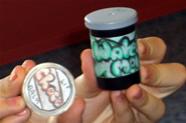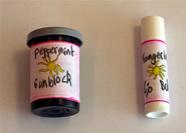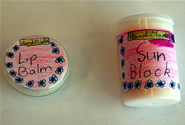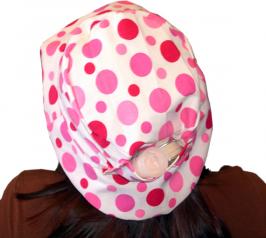Sunsafe – Unit plan

Overview
Year: 8
Biotechnology and soft materials unit Semesters 1 and 2
Although this unit is both a biotechnology and soft material unit, this example focuses on the biotechnology part of the unit run over one term.
Skin cancer and the metastasis of this cancer to other areas of the body is a huge problem in New Zealand for humans and animals.
Level 2
You are required to follow the key stages identified by the teacher to make headgear and lip and face sun blocks for an identified client.
Level 3
You are required to design and make headgear and lip and face sun blocks for a client / type of stakeholder of your choice. The headgear must hold the lip and face sun blocks
Level 4
You are required to take advantage of this opportunity and to design and make a solution for a client / type of stakeholder of your choice. The solution should make use of resources from Soft Materials and Biotechnology and should fit together as one unit.
(From the introduction hints and the resources available most students will choose the options below but variations can be dealt with via negotiated outcomes that will be detailed as they happen).
Achievement objectives and learning outcomes
| Technological practice: Brief development | ||
| Achievement objectives & learning outcomes | Assessment strategy | Assessment criteria |
| Students can: Write a conceptual statement and develop key specifications. | Application and verbal explanation of the specifications. Teacher questioning. Tests Written brief | BD Level 4 Identified a need or opportunity and developed a conceptual statement that explained and justified what was to be done. Used detailed client feedback and understandings of skin cancer protection to compile detailed specifications and to refine the brief. Final specifications allowed for own, teacher and client evaluation of the outcome.
BD beginning Level 4 |
| BD Level 3 Was able to develop a conceptual statement that explained what was to be done and why. Key specifications were developed and refined taking into account client requirements. Final specifications allowed for own and teacher evaluation of the outcome.
BD beginning Level 3 |
||
| BD Level 2 Was able to explain what was to be done. Key specifications required for the product were developed.
BD beginning Level 2 |
||
| BD Level 1 Described what was to be done. Identified attributes outcome should have.
BD beginning Level 1 |
||
| Technological practice: Outcome development and evaluation | ||
| Achievement objectives & learning outcomes | Assessment strategy | Assessment criteria |
| Students can: through research and discussion, develop concept ideas, trial resources and develop an outcome that meets the specifications. | Log record, brief modifications, teacher observation | ODE Level 4 Consulted client and carried out research and modelling to inform the development of concepts for feasible solutions that addressed the given opportunity, client needs and desires and material suitability and availability. Undertook ongoing trialling of ingredients and materials and undertook extensive research to modelling to test design ideas with the client to refine the outcomes and select one for further development as justified in terms of feasibility. Final outcome was produced and trialled with the client and evaluated against specifications and evaluative feedback gained from the client used as evidence of the outcome's ability to meet the opportunity identified by the student.
ODE beginning level 4 |
| ODE Level 3 Carried out research and modelling to inform the development of concepts for possible solutions that addressed the given opportunity and client requirements. Undertook ongoing trialling of ingredients and materials and undertook further research to refine possible outcomes and select one for further development. Used modelling to test the design ideas and refine the outcome. Final outcome was trialled and evaluated against specifications and how it would meet the requirements of the client.
ODE beginning Level 3 |
||
| ODE Level 2 Carried out research and communicated possible solutions that addressed the given opportunity. Undertook ongoing trialling of ingredients and materials and undertook further research to refine possible outcomes and select one for further development. Final outcome was evaluated against specifications.
ODE beginning Level 2 |
||
| ODE Level 1 Communicated a range of concepts for an outcome and selected one for development. Developed an outcome in keeping with the identified attributes.
ODE beginning Level 1 |
||
| Achievement objectives & learning outcomes | Assessment strategy | Assessment criteria |
| Skill
Students can: | Teacher observation of lab procedure, test, teacher questioning, lab records on ratio sheets | Skill 1A Laboratory work was carried out accurately and independently. The use and ratio of ingredients in the products were able to be justified.
Skill 1B
Skill 1C
Skill 1D |
| Knowledge
Students can: | Teacher observation and peer review of student demos and model making | Know 1A Demonstrated an understanding of mitosis and of how mutations can result in the development and metastasis of skin cancer.
Know 1B
Know 1C
Know 1D |
| Achievement objectives & learning outcomes | Assessment strategy | Assessment criteria |
| Skill
Students can: | Teacher observation Finished Outcome | Skill 2A Precision sewing techniques were practised with accuracy and neatness.
Skill 2B
Skill 2C
Skill 2D |
| Knowledge
Students can: | Test | Know 1A A clear explanation was given of how vaccinations work, of how stealth viruses and parts of bacteria could be used to deliver chemotherapy drugs directly into tumours and of how genetic engineering could be used to manipulate the genes responsible for tumour development.
Know 1B
Know 1C
Know 1D |
Biotechnology section lesson plans
In most lessons:
-
careers in biotechnology are mentioned with special mention of medical advances

- ethics relating to the topic are discussed
- methods of assessment and achievement levels obtainable are discussed
- laboratory skills are developed and the importance of keeping lab records as a method of control is facilitated via use of ratio sheets
- opportunity is given for the development of each student's key competencies
The components listed inbold under each session below were used as an assessment focus for students throughout the unit.
Session 1
BD, ODE, TM
Combined introduction to unit to establish the context and issue via:
- a brief demonstration of how and why skin cancer occurs and how risks of getting skin cancer can be minimised, using models and diagrams (electromagnetic spectrum, UV index, SPF, skin structure, types of skin cells, melanin, tumour development, metastasis, free radicals, antioxidants, blocking out UVA and B rays)
- demonstration and explanation of the resources available
Methods of assessment and achievement levels obtainable discussed / importance of stakeholder feedback stressed
Rules recapped / Folders checked / Booklets
Students make preliminary decision on client/type of stakeholder and write down initial conceptual statement (this can be modified any time before final product is made but the initial attempt will allow us to establish whether the student is working at Level 4, Level 3 or at Level 2).
If student is achieving at Level 2 or 3, the opportunity and need will need to be established for them before the end of the session so that they can do the homework below.
Homework:
Research stakeholder's specific needs and discuss possible solutions with stakeholder in preparation for compiling specifications. These needs and the solution must be justified verbally during an interview with the teacher.
Session 2
BD, PFP, ODE, with TP, CoTO
Make the final decision on type of stakeholder. More detailed demonstration and explanation of the resources available and their limitations re equipment, time and cost / input, output and need to have control over process. Modify initial conceptual statement if necessary. Prepare a series of 12 test lip blocks that have varying oil:wax ratios / sample essential oils and become aware of the oils' limitations re stability in sunlight. Practise using SPF ratings to calculate how long a person will be protected by a sun block. Look at a pictorial case study of how the Body Shop produced a new shampoo. Become familiar with the flow chart and the Gantt chart method of planning. Discuss links between their and others past and current practice and how this could impact on the development of an outcome that reflects brief requirements. Become aware of our plan for the production of a lip block and sun block using the Gantt Chart that has been compiled for the unit.
Homework:
Allow client to decide wax:oil ratio from test lip blocks, SPF rating, flavour, sweetness level, oil type, colour, container, labelling for lip block and SPF, as well as such things as oils, fragrence and any other additions, for sun block in preparation for compiling more detailed specifications. This initial consultation should be recorded on the evidence template (see Resources above) and the choices justified verbally during interview with teacher.
Session 3
BD, PFP, ODE, TP, TM, CoT
Modify conceptual statement if necessary and compile skeleton specifications (attributes). Become familiar with the names and function of chemicals in sun block and of how biotechnologists are using living organisms to improve the effectiveness of sunscreens. Using the client's choices, decide on the type and ratio of chemicals for a unique lip block and use the ratios to create a sample recipe given that 0.5ml of beeswax can be used. Make sample lip block. Begin initial label designs. Teacher uses lego and other models to demonstrate and explain animal cell structure including structure and function of cell membrane. The video 'Voyage inside a cell' was also shown.
Homework:
Allow client to sample and evaluate the sample lip block and evaluate initial label designs for both products. This first evaluation should be recorded on the evidence template and the modifications justified verbally during interview with teacher.
Session 4
BD, TM, ODE, TP, PFP
Compile detailed specifications for lip block. Improve lip balm sample according to client's suggestions by manipulating ratios and using different chemicals. Modify label if necessary. Teacher demonstrates mitosis and the importance of conservation of chromosome number via chromosome replication model, diagrams, photographs and a variety of YouTube videos – this will allow students to observe the variety of ways that biotechnolgists present their work via video i.e. real life, artistic, school level, university level, entertainment, animated. Students start making own series of models of a cell (with only 2 chromosomes and 6 genes on a cell template with specially folded telomeres that get shorter with every division) undergoing both healthy cell division and mutations leading to tumour formation... this will continue through the following sessions.
Homework:
Allow client to evaluate improved lip block sample and labels if they were modified. This second evaluation should be recorded on the evidence template and any further modifications justified verbally during interview with teacher. Watch YouTube mitosis videos.
Session 5
BD, ODE, TP, PFP
Modify detailed lip block specifications if necessary. Select the specifications that will allow the student, the teacher and the stakeholder to evaluate the outcome. Improve lip block sample according to client's suggestions by manipulating ratios and using different chemicals if necessary. Modify labels if necessary. Make, bottle and label final lip block prototype. Continue work on mitosis models if time allows
Homework:
Allow client to evaluate lip block prototype. This final evaluation should be recorded on the evidence template and will be communicated to the teacher via a detailed written report or presentation during Session 8.
Session 6
BD, PFP, ODE, TP,
For the sun block, students are provided with a suggested ratio for chemical types and, using the client's choices, decide on the chemicals that they will use to create a unique sun block ... the ratio is provided due to time and cost restraints. Become familiar with the names and function of chemicals in sun block and of how biotechnologists are using living organisms to improve the effectiveness and safety of sun blocks. Prepare sun block sample.
Homework:
Allow client to evaluate sun block sample. This evaluation should be recorded on the evidence template and any further modifications justified verbally during an interview with teacher.
Session 7
BD, PFP, ODE, TP, COT
Compile detailed specifications for sun block. Improve sun block sample according to client's suggestions by changing type and amount of essential oil and sun screen. Package and label sun block prototype. Test on functions of sun block chemicals (see attachment). Continue work on mitosis models. Explanation of mutations via models...caused by virus, bacteria, chemicals, radiation, heredity, diet, hormones. If the cells are melanin cells then the tumour is a melanoma... tumours are carcinomas, sarcomas, lymphomas, leukaemias and can be benign, malignant and undergo metastasis (that is, skin cancer) in more detail than introductory explanation.
Homework:
Allow client to evaluate sun block prototype. This final evaluation should be recorded on the evidence template and will be communicated to the teacher via a detailed written report or presentation during Session 8.
Session 8
ODE, TP, COT, COTO
Compile written report or verbal presentation that justifies the choice and ratio of ingredients in the lip and sun blocks and explains how well the lip and sun blocks have met the stakeholder's requirements.
Lip block and sun block can now be attached to head gear (if already made) in preparation for evaluation of final outcome in terms of how it addresses the need and opportunity in Session 8 of Soft Materials.
Cancer prevention via diet (antioxidants, pronutro, marmite, maize meal, nuts, chickpeas), regular exercise, maintenance of optimal BMI, avoidance of carcinogens (tobacco, sunlight, alcohol, trans fats, calories, cancer viruses), vaccinations (ethics with regards to cervical cancer vaccination) / screening tests... this will be a recap on the whole unit, as prevention is really intrinsic to entire unit.
Session 9 – floating lesson
COT
This extra session is designed to fit in as a whole or in parts anywhere from Session 2 onwards and is designed for students to gain a more thorough understanding of cancer causes, treatment and the latest cancer research findings by developing a basic understanding of structure and function of bacteria and viruses; the body's natural defence against disease and vaccinations; free radicals and antioxidants / DNA extraction from cauliflower / how you tan / latest research on sun block and false tans... it uses modelling and electron micrographs to explain concepts.
Links and resources

Mathematics and statistics
- N&A Level 4,5 – adjusting formularies when preparing and modifying lip balm and sun blocks using simple ratios
- G&M Level 4 – measuring out chemicals, measuring material
English
- L,R,V (P&S) and S,W,P (P&S) Level 4 – verbal description and justification of materials chosen and modifications made and a written report on how well the prototype addressed the perceived problem, need and opportunity.
Science
- NS ( US, IS, Cs, P&C ), LW PW, MW Level 4
- LW,MW Level 5
Please see accompanying sheet for specific explanations of science links
Health and Physical Education
- PH&PD (SM ),HC&E ( SA&V, RR&L ) Level 4
- PH&PD (SM ),HC&E ( SA&V, CR, P&E ) Level 5 – management of skin cancer risks (wrt SPF choices, clothes, shade) on a personal and community level
Resources
Websites and societies:
- Wikipedia – Monoclonal antibodies
- SunSmart Schools
- National Cancer Institute of the USA
- Cancer Society of South Africa
Literature:
- New Scientist Magazine:
- 3/7/04 p40
- 7/5/05 p40 Going for Go
- 19/11/0
- 20/1/07
- 24/2/07 p42
- 3/3/07 Nothing is Whiter than this Beetle
- 10/3/07 p17
- 31/3/07
- 4/4/07 p42 Switched On...RNA Interference ....Nobel Prize 2006
- 12/5/07 p8 Energenic Delivery Vehicle
- 14/ 6/07 Monoclonal Antibodies
- 14/7/07 Nanoparticles that Cancer cells just can't Exist
- 21/7/07 Scorpion Toxin Lights up Tumours
- 30/7/07 Beware the A R
- 12/1 08 p34 Filthy Healthy
- CD's Super Glue and Salsa Series 2 How everyday Products are made – K.Witman, K. Kalasky, N. Schlager
- Invisible Miracles – Gull Laboratories USANA
Videos:
- A Journey Inside the Cell, a variety of YouTube videos on mitosis.
- Steve Irwin's last adventure on using the world's most dangerous organisms to make new medicines.
Downloads
Download individual resources:
Sunsafe: Brief exemplar (Word, 154 KB)
Sunsafe: Brief template (Word, 87 KB)
Sunsafe: Evidence template (Word, 57 KB)
Sunsafe: Ingredient function test (Word, 40 KB)
Sunsafe: Label design template (Word, 29 KB)
Sunsafe: Lip balm ratios (Word, 39 KB)
Sunsafe: Making sunblock (Word, 41 KB)
Sunsafe: Mutations (Word, 38 KB)
Sunsafe: Stages of planning (Word, 433 KB)
Download all resources:

